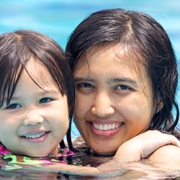Swimming Ability Alone Isn’t Enough: A New Approach to Water Safety

Many assume that teaching children to swim is the ultimate safeguard against drowning. However, recent research challenges this common assumption. Sport for Life aims to share important information that could impact how society approaches water safety and children’s aquatic abilities.
The Surprising Truth About Swimming and Drowning Prevention
Contrary to widespread perception, swimming ability alone is not sufficient to prevent drowning. This eye-opening finding comes from a 2006 study by Brenner and colleagues, and it’s reshaping how experts approach water safety education. In fact, the World Health Organization’s 2014 review found little conclusive evidence that swimming lessons alone reduce drowning in high-income countries.
The Concept of Water Competence
The answer to improved water safety lies in a more comprehensive approach called “water competence.” This concept goes beyond just the ability to swim and encompasses a broader set of skills, knowledge, and attitudes about water safety. It’s part of a larger idea called physical literacy in aquatic environments.
Understanding Physical Literacy in Aquatic Environments
Physical literacy in aquatics involves four key elements:
- Physical Skills (Psychomotor Learning): Beyond swimming strokes, this includes:
- Locomotor skills in water
- Stability and balance in various water conditions
- Object manipulation (e.g., using flotation devices)
- Cardiovascular and muscular endurance in water
- Flexibility, agility, and reaction time in aquatic situations
- Knowledge and Understanding (Cognitive Learning): This encompasses:
- Declarative knowledge about different aquatic environments
- Awareness of personal capabilities and limitations
- Strategic and tactical thinking in water situations
- Understanding of water safety rules and principles
- Confidence and Motivation (Affective Learning): Crucial aspects include:
- Self-regulation in challenging water situations
- Motivation to engage in aquatic activities
- Self-awareness of strengths and areas for improvement
- Social Skills (Social Learning): Often overlooked, this includes:
- Collaboration with others in water environments
- Understanding and applying water safety ethics
- Building relationships and a sense of community in aquatic settings
Practical Steps for Developing Water Competence
To help children develop these comprehensive skills, several strategies can be employed:
- Diversifying Aquatic Experiences: Exposing children to various water environments under proper supervision – pools, lakes, rivers, and oceans. Each presents unique challenges and learning opportunities.
- Teaching Water Safety Holistically: Going beyond basic rules to discuss rip currents, changing weather conditions, and how to assess water depth and clarity.
- Encouraging Exploratory Play: Allowing supervised, safe exploration to build confidence. This could include underwater games, treading water contests, or simulated rescue scenarios.
- Promoting Group Activities: Organizing water-based team activities to develop social skills and mutual support in aquatic environments.
- Gradual Skill Development: Following the “Adventure Paradigm” model, which suggests incrementally increasing risk as competence grows, always maintaining a balance between challenge and skill.
- Focusing on Buoyancy Principles: Emphasizing floating and breath control before complex swimming strokes. Understanding buoyancy is key to water confidence.
- Introducing Problem-Solving: Presenting age-appropriate scenarios that require critical thinking in water situations.
The Importance of Continued Learning
Aquatic competence is a lifelong journey. Even experienced swimmers can benefit from refresher courses and exposure to new water environments. The goal is to create “water-wise” individuals who can swim and understand and respect the aquatic environment in all its forms.
The Role of Community and “Herd Immunity”
Interestingly, the concept of “herd immunity” can be applied to water safety. When a significant portion of a community is water-competent, it protects less skilled individuals. This is often seen in surfing communities, where experienced surfers frequently assist others in distress.
Looking Forward
Sport for Life is working to promote this comprehensive approach to aquatic education. By developing physical literacy in aquatic environments, children can be better prepared for a lifetime of safe and enjoyable water activities.
It’s important to remember that aquatic safety is not just about perfecting swimming strokes. It’s about building a well-rounded set of skills, knowledge, and attitudes that will keep individuals safer in and around water throughout their lives.
For more information on physical literacy in aquatic environments and how to help children develop these crucial skills, interested parties can visit the Sport for Life website at sportforlife.ca/portfolio-item/physical-literacy-in-aquatic-environments-a-discussion-paper. Through collaborative efforts, parents, educators, and communities can create a new generation of water-competent individuals who are safer, more confident, and better prepared for aquatic adventures.

